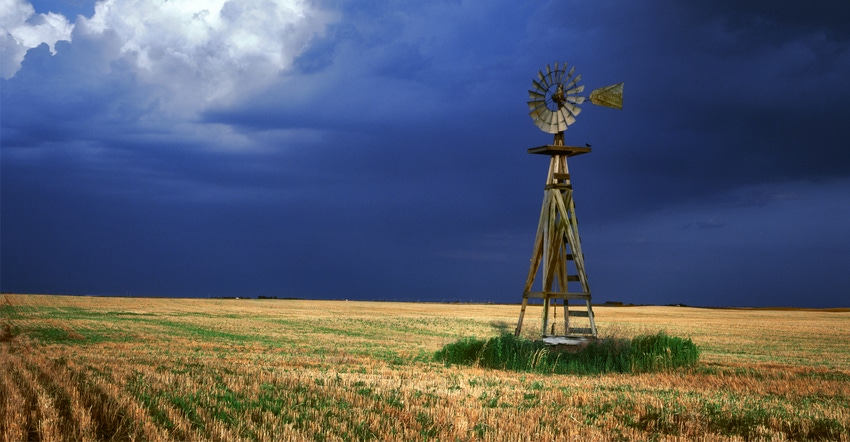
Farmers are used to taking the good with the bad, and this fall is shaping up to offer more of that.
“What it does look like, though, is nice weather for harvest for corn and beans, in general,” says Laura Edwards, when looking at the latest weather outlook for October, “for the drier weather, warmer weather, or at least equal chances of precipitation and warmer.”
That’s the good news, setting producers up to get the crop in without too many hiccups.
The “but” comes in when looking at the precipitation potential moving forward. “That’s not so good though for our soil moisture,” she adds. “We have made some beans over the last month, but we could use some more moisture, because that’s kind of our savings account to use for spring of 2022.”
Edwards is the state climatologist with South Dakota State University Extension, and gave her update during a SDSU Drought Hour webinar.
The need for soil moisture recharge is not only important for row crop farmers, but also for pasture, range grasses and forages.
“Soil moisture that will hold and potentially freeze in the winter can carry us through and get us started for the spring,” she says, “so fall is a great time to make some gains; unfortunately, though, we don’t see a lot of opportunity for that yet in October.”
Help on the way?
As the old saying goes, if you don’t like the weather, just wait, it will change. Edwards bases her Drought Hour talks on the latest data and models from the National Oceanic and Atmospheric Administration, which updates each Thursday. After her Sept. 27 presentation, new models show that mid- to late October may actually see rainfall.
“Looks like there’s going to be a pretty big pattern change here over the central U.S., which could bring more precipitation chances from Texas all the way up to the Dakotas,” she says in a follow-up conversation. “It’s starting to show onset of a wetter period in mid- to late October, so there could be some opportunity to gain some soil moisture here yet in October.”
Sadly, this latest wetter weather model Edwards refers to skirts into the eastern part of the state and stops before it reaches North Dakota. “Unfortunately, that’s really more on the eastern side of South Dakota,” she says. “When we’re looking at the western Dakotas and into Montana and Wyoming, it looks like that area might hang dry, so we could see two different stories depending what side of the state you are on.”
For those in line for the moisture pattern, that will be welcomed news since moisture is lagging behind normal precipitation levels. Edwards shares data from the High Plains Regional Climate Center showing that most of South and North Dakota linger in the 25% to 50% of average rainfall for the growing season.
“There are two counties in the northeast corner [of South Dakota] that have been wetter than average, but everywhere else in the state is carrying some deficit or less than average rainfall,” he says.
Edwards says this potential moisture pattern then settles into a dry pattern, with temperatures to stay above normal for October.
As of this writing, there has yet to be a widespread frost of freeze, and she says the temperatures are favored to be above normal. “We are just past our median frost-freeze date for most of South Dakota, so now we are getting into later-than-typica’ territory as far as fall frost-freeze is concerned,” she says.
Looking further at NOAA’s latest forecast for October through December, she says the region can expect equal chances of warmer and cooler, and near average temperatures. As far as precipitation goes, Edwards says the NOAA model “favors drier-than-average conditions” throughout the remainder of the year.
“Again, it doesn’t look great for soil moisture recharge season, but it doesn’t look awful for temperature either,” she says, “so we have to count our blessings that way.”
La Niña coming?
Edwards says a potential La Niña is on the minds of climatologists heading into winter, but what will that mean for the Upper Midwest? Current models show December shaping up for normal precipitation, and South Dakota experiencing normal mean precipitation. Most of North Dakota and northwestern Minnesota look to see cooler-than-normal temperatures brought on by La Niña for December.
Historically, La Niña makes for normal precipitation during February for most of the Upper Midwest, but lower-than-normal temperatures. Edwards says NOAA releases its official winter outlook Oct. 21, but until then he says, “I think this is something to keep in mind, if you have livestock or water or other animals, or other things like structures to worry about. Plan or be thinking about what a colder-than-average late-winter might do for calving or water or shelter in that February-March time frame.”
About the Author(s)
You May Also Like






